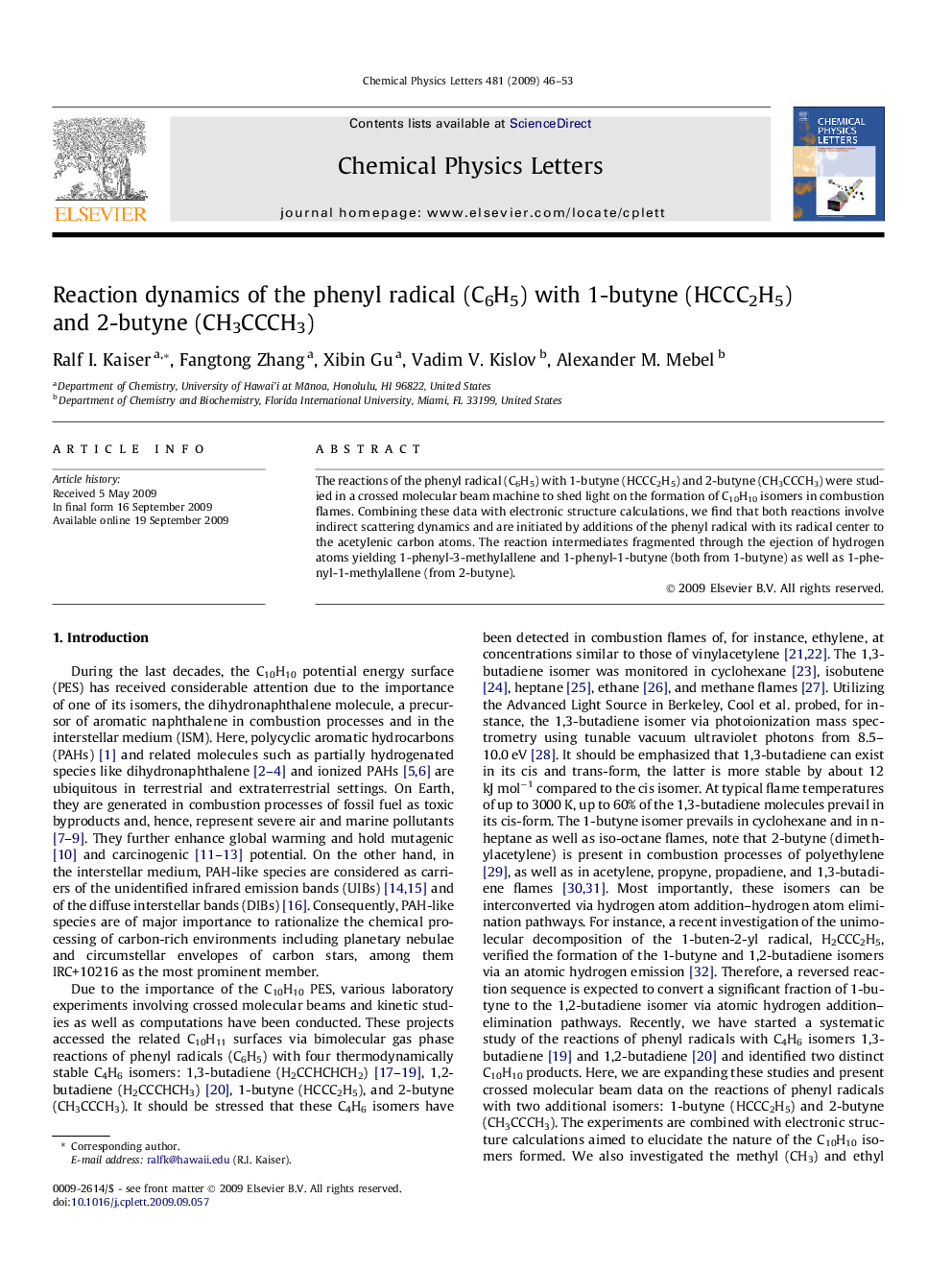| Article ID | Journal | Published Year | Pages | File Type |
|---|---|---|---|---|
| 5385939 | Chemical Physics Letters | 2009 | 8 Pages |
The reactions of the phenyl radical (C6H5) with 1-butyne (HCCC2H5) and 2-butyne (CH3CCCH3) were studied in a crossed molecular beam machine to shed light on the formation of C10H10 isomers in combustion flames. Combining these data with electronic structure calculations, we find that both reactions involve indirect scattering dynamics and are initiated by additions of the phenyl radical with its radical center to the acetylenic carbon atoms. The reaction intermediates fragmented through the ejection of hydrogen atoms yielding 1-phenyl-3-methylallene and 1-phenyl-1-butyne (both from 1-butyne) as well as 1-phenyl-1-methylallene (from 2-butyne).
Graphical abstractReactions of phenyl radicals with C4H6 isomers help to shed light on the role of the C10H10 potential energy surface in combustion flames.Download full-size image
